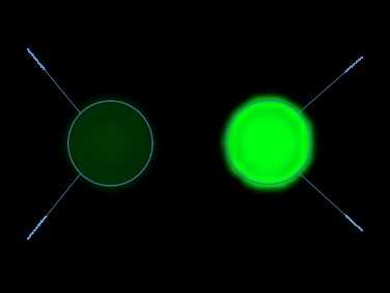Bacterial infections can pose a serious public health threat. The successful treatment of such—potentially deadly—infections largely depends on the rapid and convenient detection of the associated bacteria. Bacteria multiply quickly, which can lead to sepsis. Unfortunately, the efficient and simple detection of bacteria still is a major challenge. It sometimes takes several days to confirm a diagnosis with the tools currently available to doctors.
M. Monsur Ali, McMaster University, Canada, Weian Zhao, University of California, Irvine, USA, and colleagues have developed a DNA-catalyst-based simple fluorescent assay printed on paper, which can be used to screen multiple samples for deadly bacteria. The DNA catalyst (also called DNAzyme) specifically senses the presence of a particular pathogen, Klebsiella pneumoniae, which has been identified as a “priority pathogen” by the World Health Organization (WHO) due to antibiotic resistances and the high prevalence of infections.
The inactive DNAzyme contains a component that can act as a fluorescent dye (fluorescein-dT) and another component that acts as a quencher (dabcyl-dT). It has only a low fluorescence due to the presence of the quencher close to the fluorophore. The DNAzyme is activated upon binding to a target molecule which is present in cell lysates (i.e., the contents of broken-down cells) of K. pneumoniae. It then cleaves the bond to the quencher, which causes an enhanced fluorescence signal. The signal (pictured right, control on the left) can be easily visualized by a fluorescence scanner or even a cell phone.
The assay was performed on paper with circular reaction spots, which are surrounded by wax. The DNAzyme was applied to the spots and dried overnight. The test requires only a small sample volume and the results can be obtained within 30 minutes. The DNAzyme is moderately specific. The researchers believe that an assay with improved specificity could allow the fast screening of a large number of samples and eventually help doctors to decide on the appropriate therapeutic intervention.
- A simple DNAzyme-based fluorescent assay for Klebsiella pneumoniae,
Monsur Ali, Anatoly Splenkin, Ellena Peterson, Weian Zhao,
ChemBioChem 2018.
https://doi.org/10.1002/cbic.201800701




